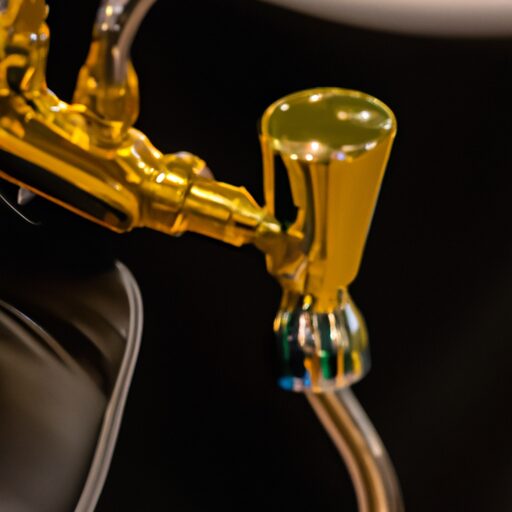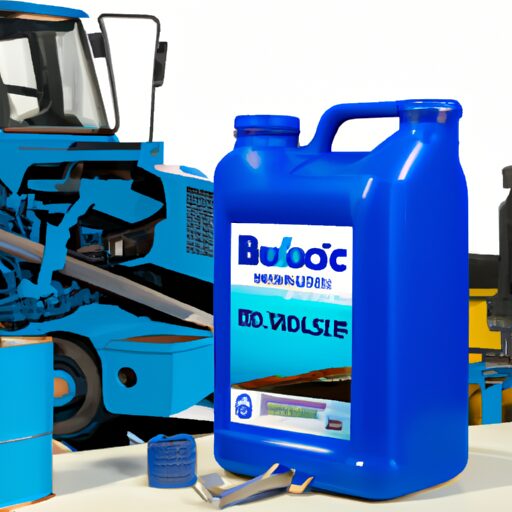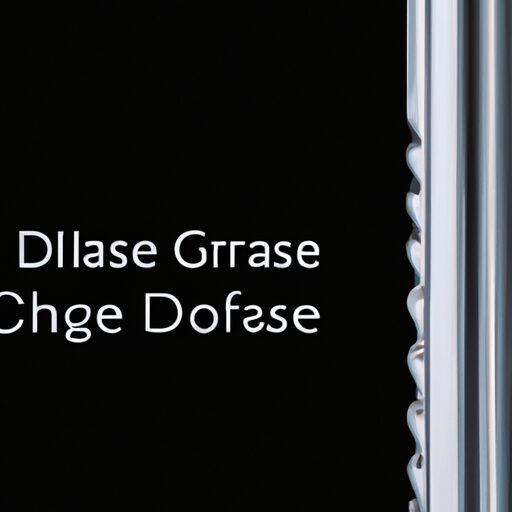How To Add Hydraulic Fluid To A Barber Chair
Barber chairs are essential tools in the grooming industry, providing comfort and convenience to both barbers and clients. To ensure their optimal functionality, regular maintenance is required, including the addition of hydraulic fluid when necessary. This article aims to provide a comprehensive guide on how to add hydraulic fluid to a barber chair.
In this technical and detailed article, we will begin by discussing the importance of identifying the specific type of hydraulic fluid needed for your barber chair. We will then outline the necessary tools and equipment required for the task at hand. Furthermore, we will guide you through locating the hydraulic fluid reservoir and checking its current level.
Additionally, step-by-step instructions will be provided on how to properly add hydraulic fluid to the reservoir. We will also highlight important considerations such as checking for leaks and conducting a thorough testing of the chair’s functionality after adding the fluid.
Finally, we will conclude with valuable tips for regular maintenance that can help keep your barber chair in optimal condition. By following these guidelines, you can ensure that your barber chair operates smoothly and efficiently, guaranteeing enhanced experiences for both barbers and clients alike.
Identify the Type of Hydraulic Fluid Needed
To identify the type of hydraulic fluid required for a barber chair, one must carefully examine the manufacturer’s specifications and consult professional resources to ensure accurate selection. Choosing the right hydraulic fluid is essential to maintain the optimal functioning of the chair’s hydraulic system. The manufacturer’s specifications should provide detailed information regarding the specific type and grade of hydraulic fluid recommended for use in their chairs.
Common mistakes when adding hydraulic fluid include using an incorrect type or grade that can lead to system malfunctions or damage. It is important to note that different barber chairs may have varying requirements, so it is crucial to follow the manufacturer’s guidelines precisely.
Consulting professional resources such as industry experts or equipment suppliers can also be helpful in determining the appropriate hydraulic fluid for a barber chair. These professionals possess extensive knowledge and experience in selecting suitable fluids for various equipment.
In conclusion, identifying the correct hydraulic fluid for a barber chair requires careful examination of manufacturer specifications and seeking guidance from professional resources. Once you have determined the right type of hydraulic fluid needed, you can proceed to prepare the necessary tools and equipment for adding it to your barber chair’s system.
Prepare the Necessary Tools and Equipment
Firstly, gather all the essential tools and equipment required for the task at hand. To add hydraulic fluid to a barber chair, you will need the following tools:
| Tools Needed | Equipment Required |
|---|---|
| Screwdriver | Funnel |
| Adjustable wrench | Clean cloth |
| Silicone lubricant | Hydraulic fluid container |
The screwdriver and adjustable wrench are necessary for removing any screws or bolts that may be securing the reservoir cap. A funnel is needed to ensure precise pouring of the hydraulic fluid into the reservoir without spillage. The clean cloth is useful for wiping off any excess oil or dirt from the reservoir cap before opening it. Additionally, silicone lubricant should be used to lubricate any seals or gaskets on the reservoir cap to prevent leaks.
Once you have gathered all these tools and equipment, you can proceed to locate the hydraulic fluid reservoir. This is an important step in adding hydraulic fluid as it allows you access to where the fluid needs to be added.
Locate the Hydraulic Fluid Reservoir
The identification of the hydraulic fluid reservoir is a crucial step in ensuring the smooth operation and maintenance of the equipment. To locate the hydraulic fluid reservoir, follow these steps:
-
Consult the manufacturer’s manual: The location of the hydraulic fluid reservoir may vary depending on the make and model of the barber chair. The manual will provide specific instructions on where to find it.
-
Look for a cylinder-shaped container: The hydraulic fluid reservoir is typically a cylinder-shaped container made of metal or plastic. It is usually located near the base of the chair or underneath the seat.
-
Check for labels or markings: Some barber chairs have labels or markings indicating that it is the hydraulic fluid reservoir. Look for words like "hydraulic" or symbols that represent hydraulic systems.
-
Determine its capacity: Once you have located the hydraulic fluid reservoir, check its capacity by referring to the manufacturer’s manual or any information provided on the container itself. This will help you determine how much hydraulic fluid you need to add.
Identifying and locating the correct hydraulic fluid reservoir is essential as using an incorrect one can lead to potential risks, such as damage to the system or reduced performance. Therefore, understanding where it is located ensures proper maintenance and prevents any mishaps during this process. Transitioning into checking and maintaining proper fluid levels within this system will be discussed in subsequent sections.
Remove the Reservoir Cap and Check the Fluid Level
One important step in maintaining the hydraulic system is to remove the reservoir cap and check the level of the fluid inside. Regular fluid checks are essential for ensuring the smooth operation of a barber chair. The hydraulic fluid plays a crucial role in providing support and stability to the chair, allowing it to be adjusted according to the customer’s needs. By regularly checking the fluid level, barbers can identify any signs of low hydraulic fluid levels, which can lead to decreased performance and potential damage to the chair.
Signs of low hydraulic fluid levels may include difficulty in adjusting the height or recline position of the chair, as well as unusual noises or vibrations during operation. To check the fluid level, simply remove the reservoir cap located on top of the chair’s base. Using a dipstick or visually inspecting the fill line indicator, determine if there is enough fluid present. If not, it is necessary to add hydraulic fluid to ensure optimal performance.
In order to add hydraulic fluid to the reservoir and maintain proper levels, please refer to… (transition into subsequent section)
Add Hydraulic Fluid to the Reservoir
To maintain optimal performance, ensuring adequate levels of the essential support and stability component is crucial for the hydraulic system in question. When adding hydraulic fluid to the reservoir, it is important to follow a precise procedure to prevent any potential issues that may arise from incorrect handling or insufficient fluid levels.
Firstly, locate the fill port on the reservoir and remove any debris or dirt that may have accumulated around it. This will ensure a clean and secure connection when adding fluid. Next, use a funnel with a narrow spout to carefully pour hydraulic fluid into the reservoir until it reaches the recommended level indicated by the manufacturer. It is advisable to use a designated hydraulic fluid appropriate for your specific barber chair model.
During this process, it is also important to bleed any air that may have entered the system. Air pockets can cause pressure fluctuations and affect the functionality of your chair. To do this, slowly pump or operate the chair multiple times while checking for any signs of air escaping from valves or connections.
Once you have added sufficient hydraulic fluid and bled any air, proceed to check for leaks and test the chair’s movements. This will ensure proper functioning before allowing clients to use it without concern.
In conclusion, adding hydraulic fluid correctly while bleeding air ensures optimal performance without troubleshooting issues.
Check for Leaks and Test the Chair
Following the completion of the hydraulic fluid addition process, a thorough inspection for any potential leaks and subsequent testing of the chair’s functionality is essential to ensure its reliable performance. Troubleshooting common hydraulic chair issues is crucial in identifying and resolving any problems that may arise. One common issue is leakage, which can occur due to worn seals or damaged components. By carefully examining the chair for any signs of fluid leakage, such as damp areas or puddles underneath, it is possible to pinpoint the source of the problem and take appropriate action.
In addition to checking for leaks, testing the chair’s functionality is equally important. This involves ensuring that all hydraulic mechanisms are working correctly, including adjusting the height and recline positions smoothly without any jerking or difficulty. Testing should also involve checking if there are any strange noises during operation, as this could indicate underlying mechanical issues.
Proper maintenance plays a vital role in preventing hydraulic chair problems. Regularly inspecting for leaks and conducting functional tests helps identify potential issues early on, allowing prompt repairs before they escalate into major problems. Maintaining cleanliness by wiping down surfaces with a suitable cleaning solution keeps dirt and grime from accumulating in critical areas.
In conclusion, troubleshooting common hydraulic chair issues and performing regular maintenance are essential steps to keep your barber chair in optimal condition. By addressing potential leaks promptly and ensuring proper functionality through regular testing, you can extend the lifespan of your barber chair while providing reliable service to clients.
Regular Maintenance Tips to Keep Your Barber Chair in Optimal Condition
Regular maintenance is crucial for ensuring the optimal condition of your barber chair, and implementing these maintenance tips will help prolong its lifespan. To keep your barber chair in excellent working order, it is essential to follow regular maintenance schedules. This includes inspecting the chair for any signs of wear and tear or potential issues. Check all moving parts such as the hydraulic pump, reclining mechanism, and footrest for smooth operation. Lubricate these components regularly to prevent rusting and ensure proper functioning.
In addition to routine inspections, troubleshooting common issues promptly is vital to maintain your barber chair’s optimal condition. For instance, if you notice any leaks in the hydraulic system, it is important to address them immediately by identifying the source of the leak and repairing or replacing the damaged parts. Regularly check for loose bolts or screws that may affect stability and tighten them as needed.
Furthermore, keeping your barber chair clean is an integral part of its maintenance. Regularly wipe down all surfaces with a mild soap solution and disinfectant to prevent buildup of dirt, hair products, or other contaminants that can affect its appearance and performance.
By adhering to proper maintenance schedules and promptly addressing any issues that arise, you can ensure that your barber chair remains in optimal condition throughout its lifespan while providing a comfortable experience for both barbers and clients alike.
Frequently Asked Questions
How often should I add hydraulic fluid to my barber chair?
Hydraulic fluid should be added to a barber chair as part of proper maintenance. The frequency depends on the chair’s usage and condition, but regular inspections and troubleshooting tips can help identify when it is necessary.
Can I use any type of hydraulic fluid for my barber chair?
It is important to use the correct hydraulic fluid for a barber chair in order to ensure compatibility. Using the wrong type of hydraulic fluid can cause damage and malfunction, compromising the performance and safety of the chair.
What are the signs of a hydraulic fluid leak in a barber chair?
Signs of a hydraulic fluid leak in a barber chair include decreased functionality, abnormal noises, visible oil stains, and a sudden drop in hydraulic pressure. Identifying and addressing these signs promptly will prevent further damage to the chair’s hydraulic system.
Can I use any type of container to add hydraulic fluid to the reservoir?
Using different containers to add hydraulic fluid to the reservoir of a barber chair has pros and cons. While alternative methods exist, it is important to consider factors such as cleanliness, compatibility, and precision when selecting a container for this task.
How do I dispose of old hydraulic fluid from my barber chair?
Disposing of old hydraulic fluid involves careful consideration of disposal methods to minimize environmental impact. Properly handling and recycling the fluid through authorized channels ensures its safe management and reduces the risk of contamination or harm to the ecosystem.
Conclusion
In conclusion, adding hydraulic fluid to a barber chair requires identifying the type of fluid needed, preparing the necessary tools and equipment, locating the hydraulic fluid reservoir, removing the reservoir cap and checking the fluid level, adding hydraulic fluid to the reservoir, and checking for leaks and testing the chair. Regular maintenance is also important to keep the barber chair in optimal condition. It is worth noting that proper maintenance can extend the lifespan of a barber chair by up to 50%.






